Waryong Gisa Sikdang(와룡기사식당)
9.0Km 2020-11-26
8 Taerigeumsan-ro Andong-si Gyeongsangbuk-do
+82-54-854-8980
It is a Korean restaurant with 20 years’ tradition. This Korean dishes restaurant is located in Andong-si, Gyeongsangbuk-do. The most famous menu is braised chicken.
An dong gotak Esanru (안동고택 이상루)
9.7Km 2024-12-20
3193-6 , Pungsantaesa-ro, Andong-si, Gyeongsangbuk-do
+82-10-3522-1542
Andong Old House Lee Sangnu stands at the foot of Cheondeungsan Mountain in Andong, Gyeongsangbuk-do. The house has a 250-year history and is still used for family rituals commemorating the founder of the Andong Kim Clan. Lee Sangnu is a dignified two-story wooden pavilion with an attic, while at Yisangru visitors can set a fire in the fire pit in the winter or sleep in a tent or mosquito net in the summer. Cultural programs are available: tea ceremonies, knot craft, the mask dance, natural dyeing, Korean paper craft, and learning about filial piety. The Old House’s location between Andong Hahoe Village and Dosan Seowon makes it convenient for local site-seeing.
Byeolcheongung (별천궁)
11.0Km 2021-03-30
141, Bongjeongsa-gil, Andong-si, Gyeongsangbuk-do
+82-54-857-4168
It is a restaurant with a hanok interior. This restaurant's signature menu is set menu with grilled salted mackerel. This Korean dishes restaurant is located in Andong-si, Gyeongsangbuk-do.
Andong School of Korean Etiquette (안동예절학교)
11.0Km 2023-04-07
1333-5, Toegye-ro, Andong-si, Gyeongsangbuk-do
+82-54-841-0511
Andong School of Korean Etiquette, which is located in Andong, is a mecca of Korea's Confucian customs and provides an opportunity to experience traditional Korean etiquette.
In addition to Korean traditional etiquette, Andong School of Korean Etiquette also teaches tea etiquette and traditional Korean music using instruments such as janggu and gayageum. Students can also experience the joy of learning how to play folk games such as yunnori and kite-flying. The school offers a wide variety of hands-on programs related to Korea's traditions and customs such as mask dance, paper craft, cooking, wedding, and eco-rafting on Nakdonggang River.
There are other popular tourist attractions nearby such as Dosanseowon Confucian Academy, Forest Science Museum and Yi Yuk-sa Literary Hall.
Uiseong Gounsa Temple (고운사 (의성))
11.5Km 2019-11-26
415, Gounsa-gil, Uiseong-gun, Gyeongsangbuk-do
+82-54-833-2324
Gounsa Temple lies on Deungunsan Mountain in Uiseong, Gyeongsangbuk-do, and was built by Monk Uisang in 681 during the reign of King Sinmun of the Silla Kingdom. Although the pronunciation of the name was never changed, its meaning slightly changed from “High Cloud Temple” to “Solitary Cloud Temple” after Choi Chi-won, a renowned scholar in the late Silla Period, helped to build two pavilions (Gaunru and Uhwaru) and renamed it. It is Branch Temple No.16 of the Korean Buddhist order, Jogyejong, and manages temples in Uiseong, Andong, Yeongju, Bonghwa, and Yeongyang.
Befitting its meaning, the temple is surrounded by outstanding scenery on Deungunsan Mountain, meaning “Riding on the Clouds.” Quite isolated from villages, the temple is a very quiet, serene place.
Gounsa Temple is home to one of the most cherished pieces of architecture, Gaunru Pavilion (“Floating over the Clouds”). This elegant pavilion is propped up by wooden columns, which are, in turn, supported by foundation stones. It looks as if the pavilion placed its feet in the water while standing.
Among the many buildings comprising the temple complex, Yeonsujeon Hall is a unique building that was built to store Eocheop (the genealogical record of royal families) in 1774 (20th year of King Yeongjo). As a royal building, it shows the Confucian architectural style, different from other Buddhist buildings within the temple.
Jukheon Traditional House [Korea Quality] / 죽헌고택 [한국관광 품질인증]
11.6Km 2023-09-05
24 , Taejangjukheon-gil, Andong-si, Gyeongsangbuk-do
+82-10-5217-2174
Jukheon Old House is an old house near Bongjeongsa Temple in Andong, Gyeongsangbuk-do. Originally built in 1886 by independence activist Kim Ga-jin, it was later acquired by Jukheon Lee Hyeon-chan and until recently was used as a family gathering place for jaesa ancestral rites. There are three 2-person guestrooms (Jukheon Gallery Room, Seojae Room and Elizabeth Room) and one four-person room (Jukheon-dong Farm Room). Visitors can explore the old thatched millhouse with its ancient treadmill, or enjoy a walk along Queen Elizabeth Road to Bongjeongsa Temple. A simple complimentary breakfast is provided.
Iljik Sikyuk Sutbul Garden (일직식육숯불가든)
11.8Km 2021-03-24
2474-9, Pungil-ro, Andong-si, Gyeongsangbuk-do
+82-54-858-0103
It is a house where you can enjoy Korean traditional bulgogi. This Korean dishes restaurant is located in Andong-si, Gyeongsangbuk-do. The representative menu is bulgogi hot pot.
Mancho Gotaek [Korea Quality]만초고택[한국관광 품질인증]
12.0Km 2023-10-30
48, Geumsojungang-gil, Andong-si, Gyeongsangbuk-do
+82-10-5191-3697, +82-10-3057-2223
The 150-year old Mancho Gotaek (Old House) in Imha-myeon, Andong, Gyeongsangbuk-do, was the home of Mancho Im Dong-han, a Joseon courtier at the court of King Gojong, and is an Andong cultural heritage asset. With a mountain behind and a stream flowing in front of it, this was a perfect spot for a house according to Korean pungsu (feng shui). Guestrooms comprise a sarangbang, small room, larger room, and loft room, all ondol-heated. Nearby must-visit places include the Geumso Ecological Park and Andongpo Village where Andong hemp is made.
Hakgasan Chamma Sikdang(학가산참마식당)
12.2Km 2021-04-09
677, Bukpyeong-ro, Andong-si, Gyeongsangbuk-do
+82-54-868-7456
It is a good house with delicious dishes including fresh yams, where side dishes are cooked every morning. This Korean dishes restaurant is located in Andong-si, Gyeongsangbuk-do. The most famous menu is bulgogi.
Andong Susan Sikdang (안동수산식당)
12.2Km 2021-03-24
64, Yutongdanji-gil, Andong-si, Gyeongsangbuk-do
+82-54-859-9779
It is a store where you can enjoy fresh seafood. This Korean dishes restaurant is located in Andong-si, Gyeongsangbuk-do. The representative menu is cold raw fish soup.
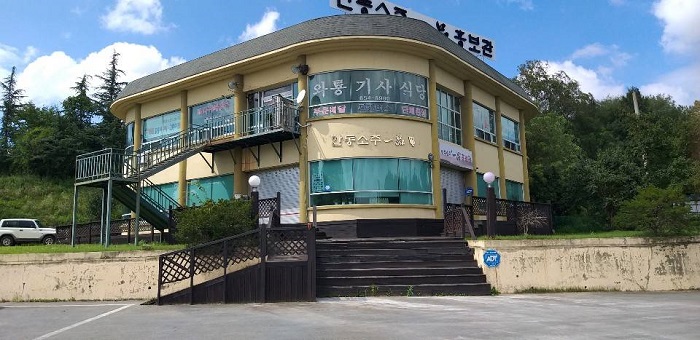
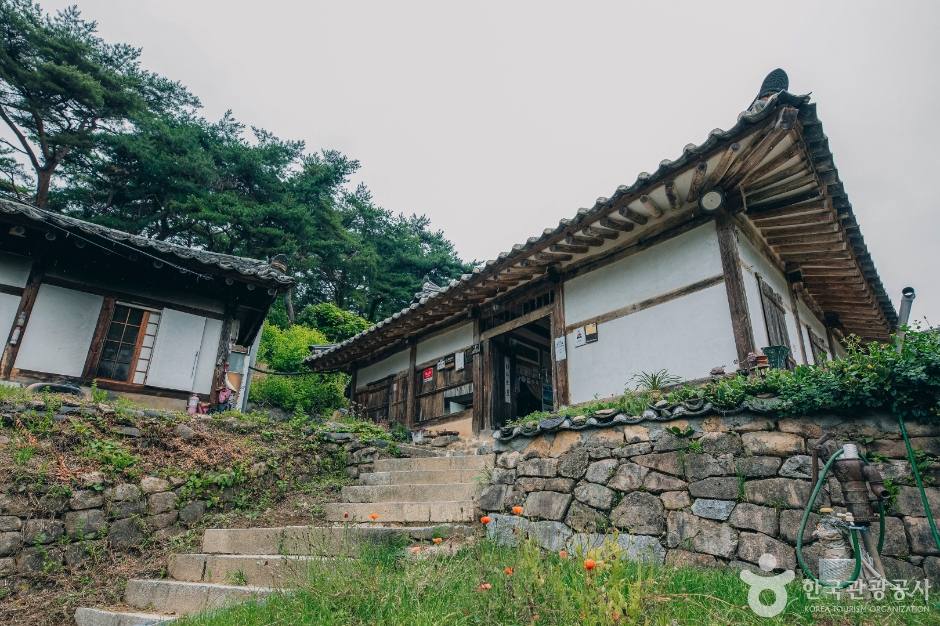
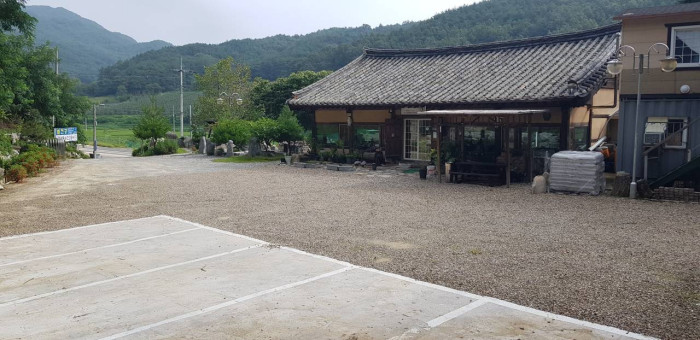

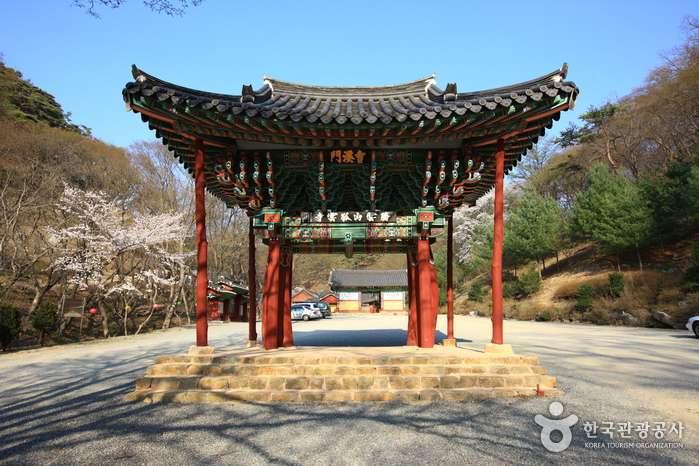
![Jukheon Traditional House [Korea Quality] / 죽헌고택 [한국관광 품질인증]](http://tong.visitkorea.or.kr/cms/resource/33/2993133_image2_1.jpg)
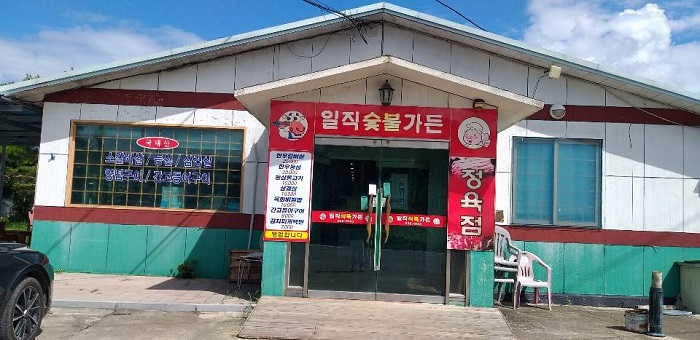
![Mancho Gotaek [Korea Quality]만초고택[한국관광 품질인증]](http://tong.visitkorea.or.kr/cms/resource/05/3022005_image2_1.jpg)
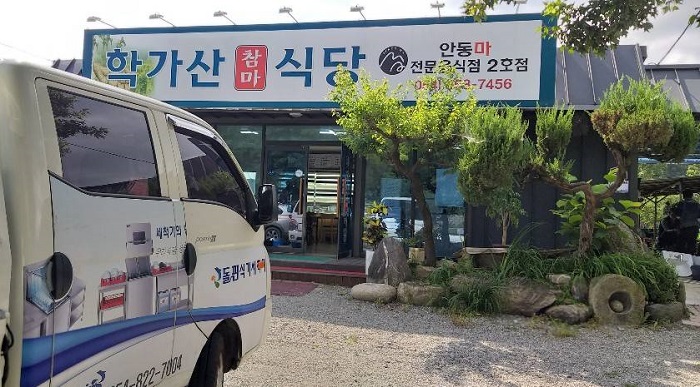
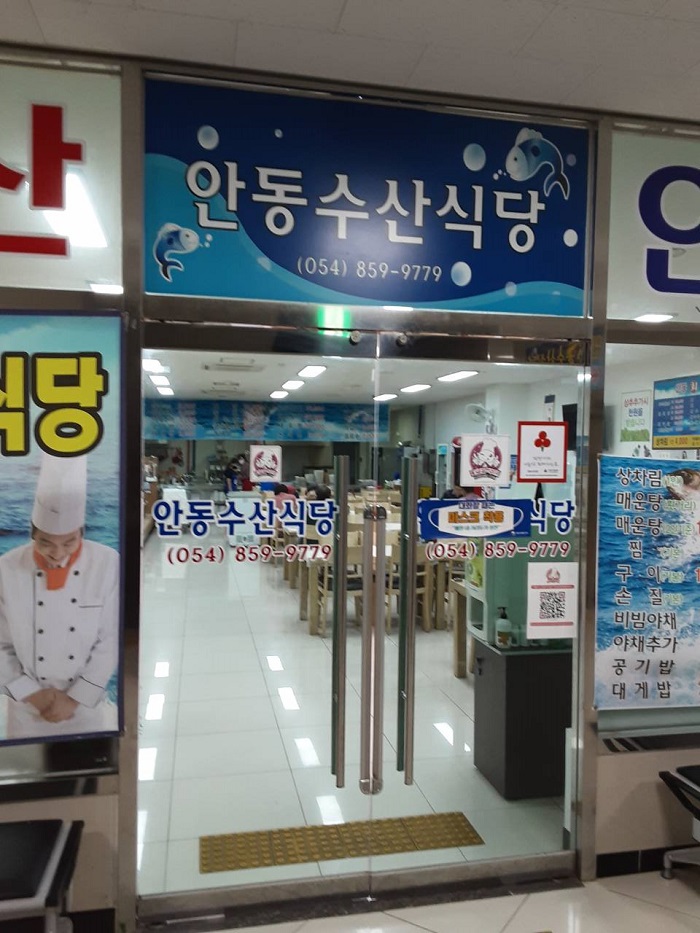
 English
English
 한국어
한국어 日本語
日本語 中文(简体)
中文(简体) Deutsch
Deutsch Français
Français Español
Español Русский
Русский